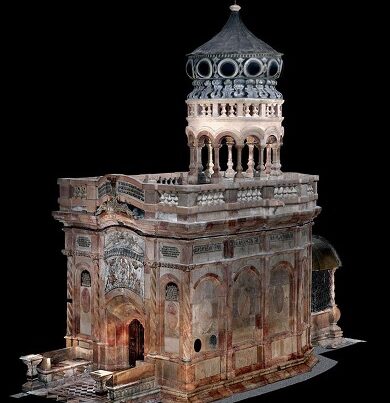by Sherif Omar
ABSTRACT
The Sapil (public fountain) and Kuttab (school) of Mustafa Sinan are important monuments dating back to the Ottoman Era (1630 AD). The main façade of the Sapil in the southeastern side on the Soq al-Silah Street has a set of ceramic tiles with floral decorations, but heavily deteriorated from environmental factors. In fact, the tiles suffered severe deterioration, causing some deterioration phenomena, such as crazing and large, macro cracks, peeling of the glaze layer, broken ceramic tiles and accumulated dust and soot on the surface, resulting in the deformation and obliteration of the decorations. The present research paper is a characterization study (chemical composition and mineralogical structure of the body and the glaze layer) to determine their deterioration aspects. USB digital microscope, X-Ray Diffraction, and SEM-EDX were used to study ten various samples. The results of tiles analysis showed the use of local clay mixed with a small amount of lime. The firing temperature of these tiles was around 900-1000 ºC according to the presence of diopside. The mortar of the installation of the ceramic tiles was composed of a mixture of gypsum, lime, and sand. It was determined that the alkaline and lead oxides were the main components of the glaze layer, with rising lead oxide in all samples. It was also seen that the white glaze color was obtained with calcium, whereas the cobalt oxide was used for dark blue. At the same time, the copper oxide was used for light blue and green color. Iron oxide with manganese was used to get the coral red glaze. This helped to choose compatible materials for their future restoration.
![]()



